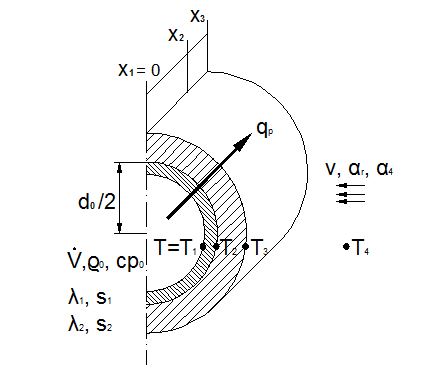Calculation of insulation and heat losses |
Calculation for heat transfer between pipe and environment.
- Determine the volume flow.
- Determine the wind speed (air speed around the pipe) to enable the outdoor simulation.
- Choose the start temperature of your medium and the ambient temperature.
- Define your medium via density and heat capacity.>
- Describe pipe and insulation with their wall thickness and thermal conductivity.
- Choose the quality of the surface to enable the correct consideration of radiation.
- Surcharge value for thermal bridges: how is the pipeline supported?
The results for stationary heat transfer will be presented along the pipe at x1, x2 and x3. Values for outdoor installation (forced convection) and indoor installation (natural convection). Instationary heat transfer will be calculated for the time span chosen.

Home
|
Calculation Programs
|
Download
|
Upload
|
Physical properties and Theory
|
Literature
|
Links
|
Converter
|
Terms of use
|
About